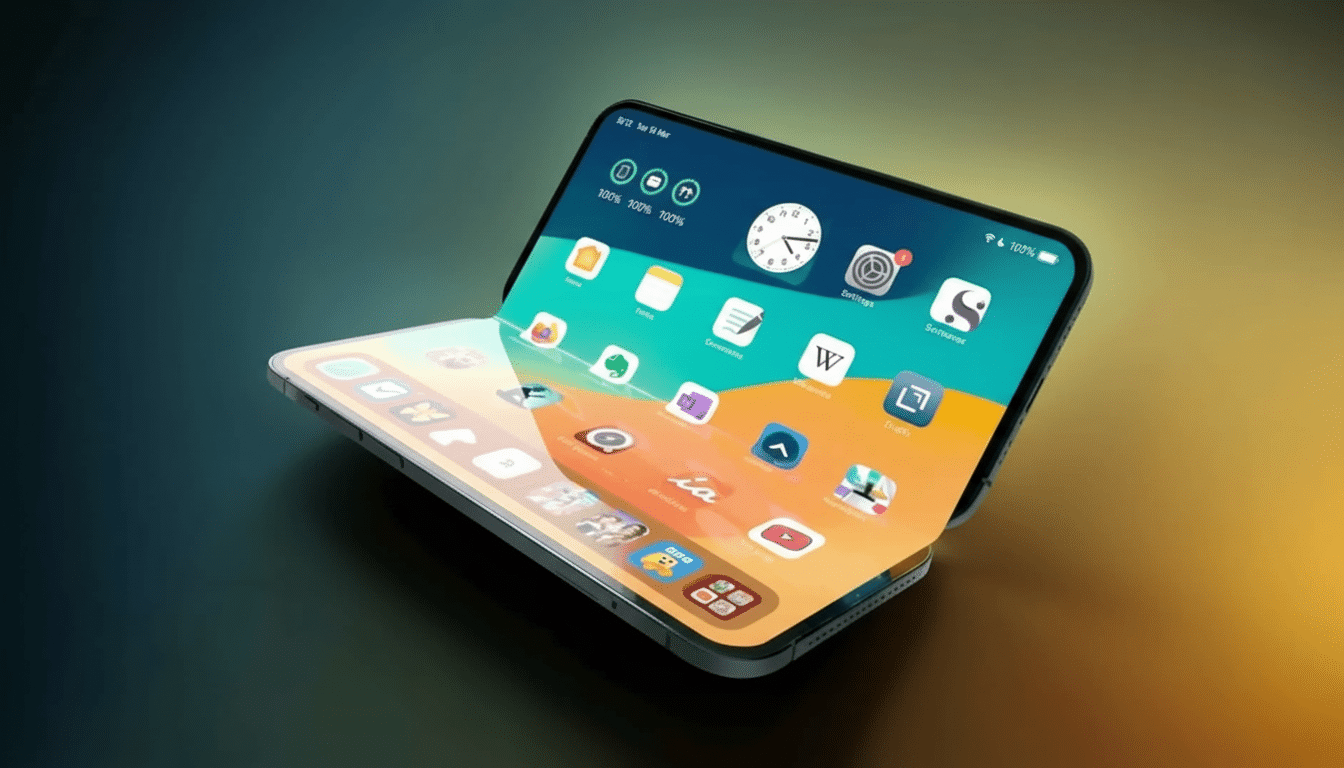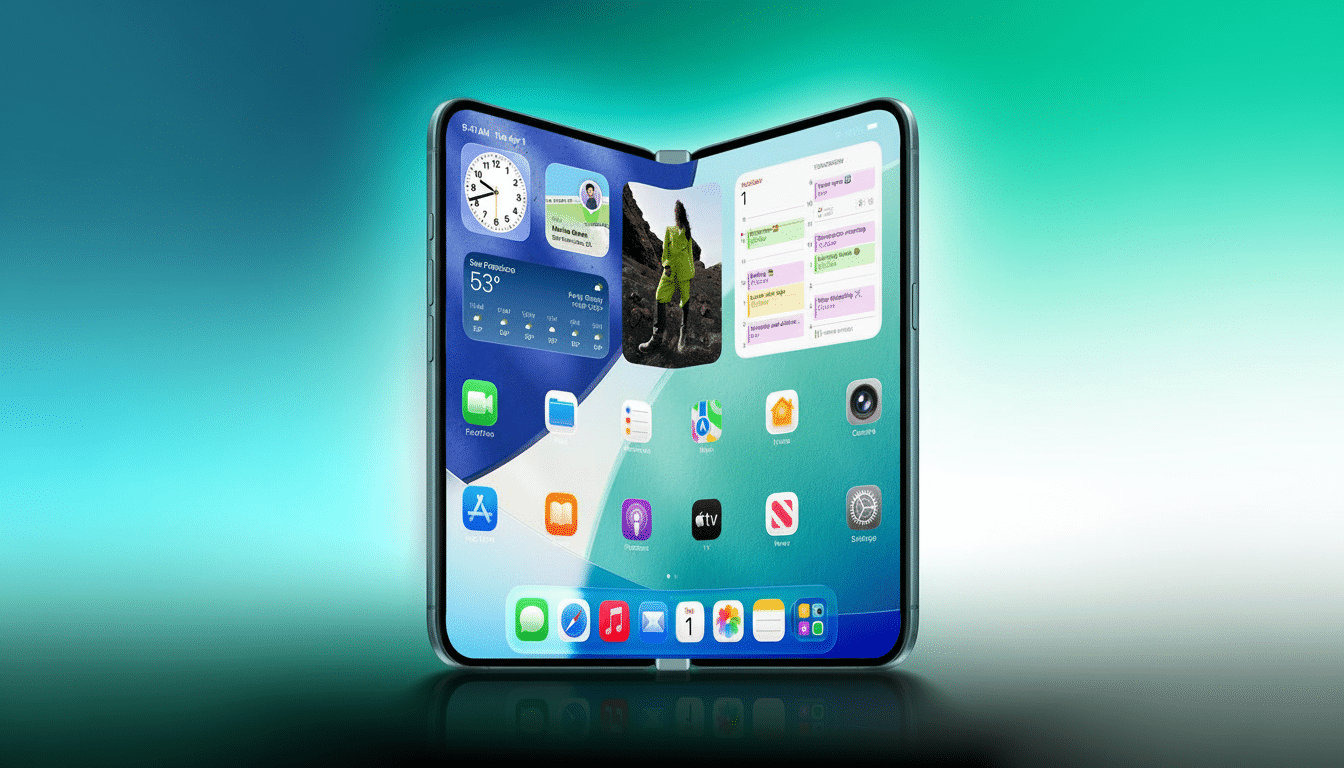Apple is preparing its first foldable iPhone for 2026 and a larger one two year later, according to people familiar with the company’s road map and repeated supply-chain evidence. If timing holds, Apple will join the foldables sector seven years after the original wave — laggard by intention, but poised to take advantage of a mature technology stack and consumer demand.
What to Expect From Apple’s First Foldable iPhone
Analyst Ming-Chi Kuo projects that the foldable iPhone will – as part of a family of products – hit the streets in 2026 as part of the iPhone 18 line. Early targets include a so-called book device, two screens in mechanical housing that open to a single, large display — perfect for reading, web browsing, and drive emails — and close to a pocketable size. “For the supply chain, the focus for Samsung is a crease-free display, which can endure a lot of folding, and durability that matches or is better than Apple’s existing specs.

Several display industry trackers suggest that Apple has been testing OLED panels from Samsung Display and LG Display, while internal hinge modules are said to be subject to hundreds of thousands of open-close cycles in order to meet long-term reliability requirements. Look for Apple to lean on its own silicon and on-device intelligence for these dynamic UI layouts as the screen switches between folded and unfolded modes.
Bigger Foldable iPad on the Way
The second is a more ambitious larger-screen foldable iPad that the company is targeting for 2028. Prototypes have been all over the place, but chatter has mostly centered on a unfolded size in the range of 18 to 20 inches — essentially, a portable canvas that broke down into a smaller, more portable package. That form factor begs for accessories: consider a magnetic keyboard, Pencil support and enhanced multitasking that pushes the device closer to an ultraportable laptop.
Apple’s math here is simple: the iPhone can be the volume base, and the low-cost flop-able iPad could expose high-qual hardware and new creative pros, mobile coders, and enterprise workflows who live out of documents and… the web.
Supply Chain Signals & Materials
One throughline in both products is ultra-thin glass (UTG) cover material. Kuo has Apple sourcing UTG from Corning, with General Interface Solutions helping on cutting, edge treatments, inspection, and packing. UTG goes smaller than 50 microns can offer a smoother touch than plastic films and better scratch resistance — important to narrowing the performance gap with a traditional iPhone display.
Behind the face shield are some weird hinge mechanisms, shock-dissipating frames, and reconfigured thermal paths to safeguard the flexible OLED building blocks. Observed the analysts, industry watching at DSCC has seen steady improvement in foldable panel yield across the ecosystem – which is a necessary precursor for the kind of volumes and quality Apple demands.
Pricing, Volumes and Market Context
Kuo forecasts Apple could ship between 8–10 million foldable iPhones in the launch year, with the possibility of manufacturing up to 25 million units next year if the supply chain ramps up and user satisfaction is high. In contrast, the bigger foldable iPad would be a niche premium device with relatively smaller volumes due to the high bill of materials and more complicated assembly.

And if that takes off, IDC has projected that sales of foldable phones could grow in the tens of millions on an annual basis, and that the global market will continue to accelerate into the second half of the decade. Samsung is still the category leader and offerings from Google, Motorola and a host of large Chinese brands — as well as smaller companies in other countries — have widened the price range. It would not be first out of the gates for Apple, but it could reset expectations around durability, software polish and resale value — the levers that usually sway would-be iPhone buyers.
Why 2026 — and What Could Slide
Apple’s timeline implies a few gating items: panel yield stability, hinge longevity in extreme temperatures and a display crease that meets the “invisible in daily use” standard.
Researchers at Bloomberg and The Information have chronicled multi-year prototype cycles with hinge designs and panel swaps as vendors iterate. Whenever any of those variables don’t meet the company’s expectations, Apple has historically delayed rather than release something that wasn’t a superior experience.
There’s also a portfolio question. Any foldable iPhone would have to be additive — it wouldn’t be able to cannibalize the Pro line. Anticipate diversification through screen size, multitasking features, and maybe, just maybe, exclusive camera angles or table-top modes, not only raw processor or lens enhancements.
What It Means for Developers and Accessories
For developers, a foldable iPhone means new breakpoints and posture states—folded, half-open, and full open—new dual-pane UI possibilities, and a new level of continuity between an external and internal display. Apple has already done a lot of prep work with adaptive layouts in iOS and iPadOS; watch for new APIs to formalize posture detection and per-pane behaviors.
On the accessory front, MagSafe alignment for a variable thickness device, case designs that protect the hinge without making the device bulky and stands that capitalize on tabletop modes offer fertile ground. Should Apple incorporate Pencil support into the foldable iPad, it may end up being the company’s most versatile sketch and markup tool yet.
The bottom line: Apple’s slow cautious steps to the foldable will stand at 2026 for iPhone and 2028 for a bigger iPad style foldable. With its maturing UTG as well as better hinges and a software stack made for adaptive screens, that company is positioning not just to go after the category but to reset it.

